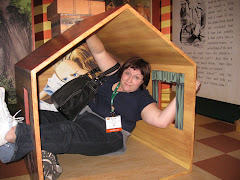The Big Idea is a frustrating master. Without one, you cannot hope to know if your exhibit was effective. But with one, you are constantly bound by the question “does it speak to the Big Idea?” The concept has provoked many a developer ranting “but it’s fun dammit!”
So why does this matter? Well, we hope that exhibit designers and builders aren’t creating exhibits for themselves. There are these people called visitors, and the exhibit, ultimately is for them.
The following is NOT a big idea: Biodiversity
That is a topic. It’s a good one, but it isn’t a big idea.
This is a big idea: Diversity of life is necessary for the survival of all living things; diversity is under threat primarily by human beings living in the environment, but things can be done and are being done to help. (Courtesy AMNH)
A big idea is a complete sentence. Ideally it should answer the Enduring Question. For this example, the Enduring Question is: “Why should we care about the diversity of life?”
Stages of Backward Design:
1) Think about what you want your visitor to come away with.
2) Think about how you will know if they “get it”
3) Plan the experience to make sure they do!
So, what is your Big Idea? How can designing backwards help your exhibit to be more effective?
(Info gathered from The Children's

No comments:
Post a Comment